
The 4 Best Calming Treats for Dogs and Cats
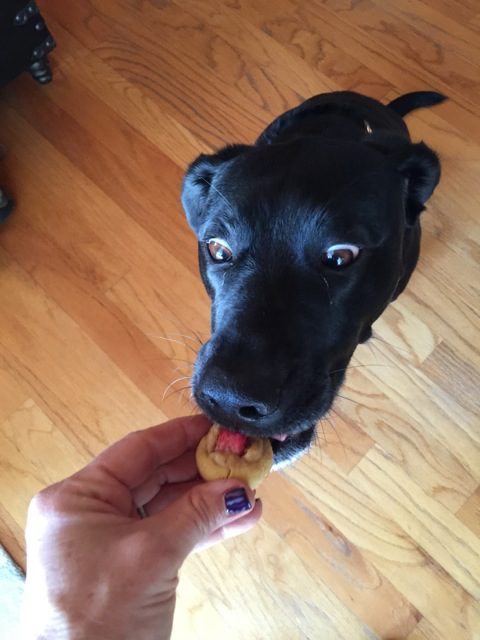
Pet Living editors select and review products independently. If you purchase through affiliate links, we may earn commissions, which help support our testing. Read more.
What are the best calming treats for dogs and cats? If your cat or dog has anxiety, a calming treat may be the one of the easiest ways to help them calm down. My favorite calming treats are:
- ThunderWunders
- ElleVet Soft Chews
- Tomlyn Relax & Calm
- Vetericyn ALL-IN
As the pet parent of an anxious pup, I’ve had a lot of trial and error experience finding what works to calm an anxious dog. In fact, I launched Pet Anxiety Awareness Month in June 2017 to help fellow pet parents find solutions to their pet’s anxiety. And symptoms of anxiety, like separation anxiety, don’t just affect dogs. Cats can also experience severe anxiety. For these pets, anxiety may severely impact their quality of life. Because of this, I want to share with you some effective, non-prescription calming solutions for both dogs and cats.
Symptoms of Cat Anxiety
Just like humans, your kitty can suffer from anxiety. This ongoing condition can take a toll on her body and mind. Because cats tend to be a bit more mysterious and less demonstrative than dogs, feline anxiety often goes undiagnosed.
In fact, this troubling problem is more widespread than you might expect. An estimated 50% of pets suffer from Fear, Anxiety, and Stress (FAS). Since symptoms in cats can be so subtle, it’s important to know the signs so you can get help for your cat.
Here are 10 of the most common cat anxiety symptoms:
- Aggression
- Becoming less active
- Clinginess
- Destructive behavior, like inappropriate scratching
- Diarrhea
- Dilated pupils
- Eating or drinking too fast
- Failure to use the litter box
- Freezing in place
- Hair loss from excessive grooming
If your cat is exhibiting any of these signs, your first call should be to your veterinarian. Many of these symptoms may be associated with certain serious medical issues, so you need your veterinarian’s help to rule anything more serious than anxiety, which is bad enough!
If there seems to be no medical basis for the behavior or symptoms, you may want to try some over-the-counter therapies that we’ll talk about below.
Learn more about the symptoms of cat anxiety.
Pin me!
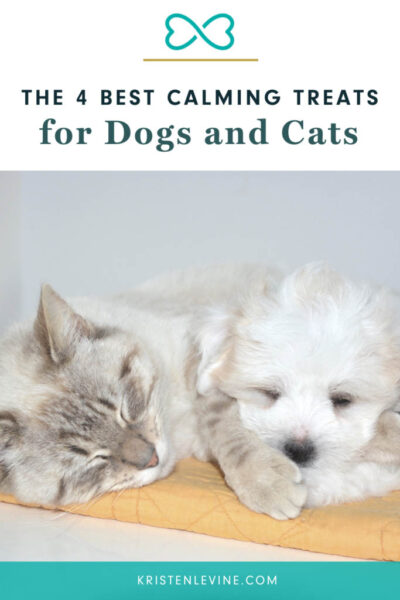
Dog Anxiety Signs
Signs of anxiety in dogs are surprisingly varied but often include some frustrating behavioral changes. So if you notice any of the following symptoms in your pup, please know he isn’t doing it on purpose or “acting out.” He may actually be suffering from anxiety. Here are some common symptoms to look out for:
- Urine marking or defecation
- Barking or howling
- Chewing/destroying things
- Digging
- Trying to escape
- Pacing
- Attempting to prevent you from leaving
- Whining/whimpering
- Trembling
- Avoiding interactions
Here again, be sure to visit your veterinarian first, as he’ll be able to rule out any urgent medical issues that could be causing the behavior.
If your dog has no medical reason for his signs of anxiety, a calming treat for dogs may be just the thing to help him regain his calm.
Possible Causes For Your Pet’s Anxiety
Once you’ve identified the signs of anxiety in your dog or cat, it’s also important to understand what’s triggering them. Here are eight potential reasons why a member of your fur family is anxious:
- Separation: Pet parents know what it’s like to arrive home to an excited pup with lots of happy tail wags. Or perhaps an affectionate kitty who greets you with head bumps and purrs. But for some pets, the long wait for you to return home is agonizing and filled with anxiety.
- Noise: My dog, Chilly, suffers from noise aversion (also known as noise phobia or noise anxiety). And unfortunately, an estimated 67% of dogs have at least one sign of noise aversion. Like Chilly, some pets may be triggered by loud noises, such as thunder and fireworks. But there are also many everyday noises that can trigger signs of anxiety in your pets.
- Social Situations: Social anxiety, or fear of strangers, may also trigger your dog or cat. When you go for walks, does your dog bark, lunge, or cower behind you when you come across others? Or maybe your cat wasn’t properly socialized as a kitten, and she hides or is withdrawn when new guests visit your home.
- Vet Visits: This anxiety trigger comes as no surprise. Visits to the veterinarian can send some of our furry friends into a panic. Just the sight of the crate or the carrier is enough to make some dogs and cats anxious.
- Changes in Environment: Like humans, most cats and dogs thrive on predictable routines. So when there are changes in our pets’ environment, fear, stress, and anxiety may follow. Adding a new pet to the family or moving to a new home are just a couple of changes that may trigger your pet. However, there are certain methods you can use to help your cat or puppy adjust to their new home.
- Gut Health: Did you know that your pet’s digestive system could be one reason for their anxiety? It’s true! Their gut health can have a direct correlation to how they respond to emotional triggers.
- Trauma: Sadly, some dogs and cats show signs of anxiety due to past trauma. Pets who were abused or surrendered to a shelter are often more predisposed to experiencing anxiety.
- Aging: Senior cats and senior dogs hold a special place in the hearts of many pet parents. But as they age, some experience cognitive changes that can trigger signs of anxiety. Read my blog post to learn how to help your senior dog. Then be sure to download my senior dog care guide below.

Best Calming Treats For Dogs And Cats
Once you’ve identified the potential triggers of your pet’s anxiety, it’s time for yummy solutions! My dogs, Chilly and Tulip, and my cat Olivia can’t resist tasty treats. These are some of our family favorites because they promote calm, peaceful behavior and overall well-being. Calming treats like these are great for car rides, taking walks, or when you’re expecting company.
It’s best to try one, see how your pet reacts, and then move on to another if necessary. Calming treats work differently for each pet, so what works for my dogs and cat may not work for yours.
Here are my hand-picked favorites for the best cat and dog calming treats:
ThunderWunders makes calming chews for both cats and dogs. These soft chews are vet- and trainer-recommended and contain ingredients that promote rest and relaxation.
ThunderWunders soft chews are a paw-some solution for car rides, trips to the vet, or meeting new pets and new people. These soft chews aren’t meant for long-term use, but they’re great for events you anticipate will stress your pet. Just make sure to dose at least 30–60 minutes before the stressful event.
ElleVet has some of my favorite dog-calming treats. I used this brand with my late dog Chilly, who had noise anxiety, and now with my dog Tulip, who has a mild case of separation anxiety. Check out their soft chews for dogs, specially formulated with CBD. And their hemp CBD oil can easily be added to your pup’s food or treats. Follow their dosing guide, which is found on their website. I give Tulip her drops 20 minutes before a stressful event. Lastly, these drops aren’t typically recommended for puppies under a year.

Tomlyn’s Relax and Calm Chews for Cats and Dogs are purr-fect for the anxious kitty in your life. These calming treats are made with natural ingredients such as chamomile, ginger, and L-tryptophan. They’re recommended by veterinarians and have a seal of approval from the National Animal Supplement Council. Best of all, they’re specially formulated to support balanced behavior and relaxation.
Tomlyn’s calming bites can help your cat relax in even the most stressful of circumstances and are great for travel, storms, and loud noises. These soft chews are given once per day, or 2–3 hours before a stressful event. These are also used as calming dog treats, so if you have both cats and dogs in your house, it may be the purr-fect solution!
ALL-IN by Vetericyn: This is not so much a calming treat for dogs. It’s a daily supplement that is not meant to show instant, calming results. But if your pup’s anxiety is coming from his gut, this can help.
ALL-IN’s MemoREM Neuro-Complex is designed to give your dog optimal nerve function. And the prebiotics are great for your pup’s gut health and digestion. ALL-IN works best when you give it to your dog on a daily basis.
Use my code PETLIVING to get 20% off your purchase at Vetericyn.com.
FAQs
What to Look for in Calming Cat and Dog Treats
So are calming treats safe for our pets? Yes, as long as you carefully consider the treats you plan on giving to your kitty or pooch. When looking for calming treats for cats and dogs, there are several key ingredients and product features to consider:
- L-theanine and Melatonin: These are common ingredients in most calming dog treats that can help reduce anxiety and regulate the sleep-wake cycle in pets.
- Chamomile and Passionflower: Both are herbs known for their natural calming properties and are often included in formulations to reduce anxiety and aid in sleep.
- Pheromones: These can mimic the calming and soothing effects that a mother has on her babies and are included in some calming aids for both dogs and cats.
- Tryptophan: This is an amino acid that promotes calmness and is a natural component in many proteins. It’s widely used in calming products for pets.
- Quality Ingredients: Besides active calming ingredients, treats should also contain palatable ingredients like chicken or liver to ensure your pet will enjoy them.
- CBD: CBD, a proven ingredient that can calm pets, can be used as a calming dog treat. As an example, ElleVet offers their CBD in oils, soft chews, and gels.
Choose calming treats for dogs and cats that are from reputable brands and are recommended or tested by veterinarians, and consider consulting with your veterinarian, especially if your pet has a health condition or is on medication. It’s also important to follow the dosage instructions on the treat’s packaging to avoid any adverse effects.
How Long Do the Calming Effects Last?
Calming chews and treats typically start to take effect within 30 minutes to an hour after consumption. The effects may last for a few hours, generally between 3 to 6 hours, but this can vary. Some calming treats may offer extended effects and claim to provide calmness for up to 24 hours.
Follow the dosage instructions on the treat’s packaging, and monitor your pet’s behavior to determine how long its effects last for your specific pet. Know that individual responses can vary, so consult with your veterinarian for personalized guidance on the duration and effectiveness of calming treats for your cat or dog.
When You Should Visit Your Veterinarian
Calming treats for dogs are convenient solutions for mild cases of pet anxiety. So it’s important to be proactive about your pet’s health and monitor for the signs and symptoms of anxious behavior. Learn to recognize your dog’s anxiety triggers. And keep an eye out for these signs of anxiety in your cat.
Remember, if you suspect your pet is suffering from anxiety, you should talk to your veterinarian right away. He or she can help develop an effective routine to manage and treat your pet’s anxiety. And your dog or cat will be on their way to a calmer, more enjoyable life.






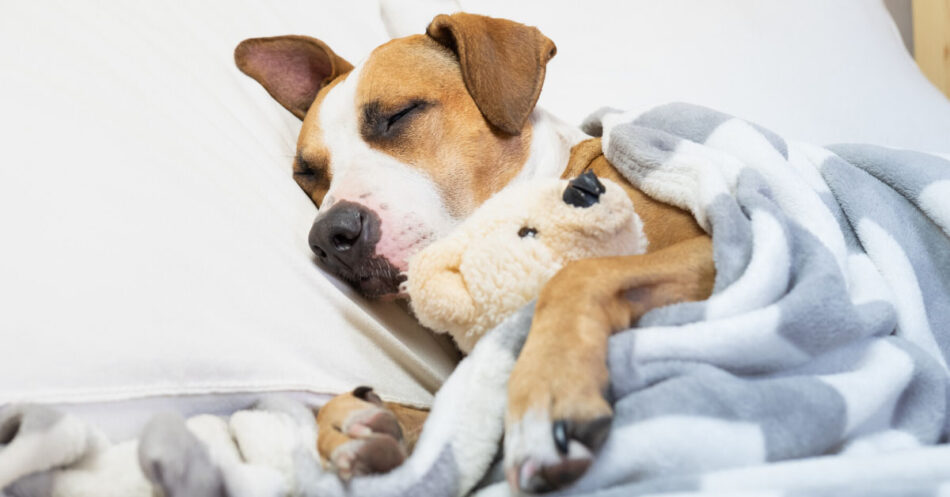
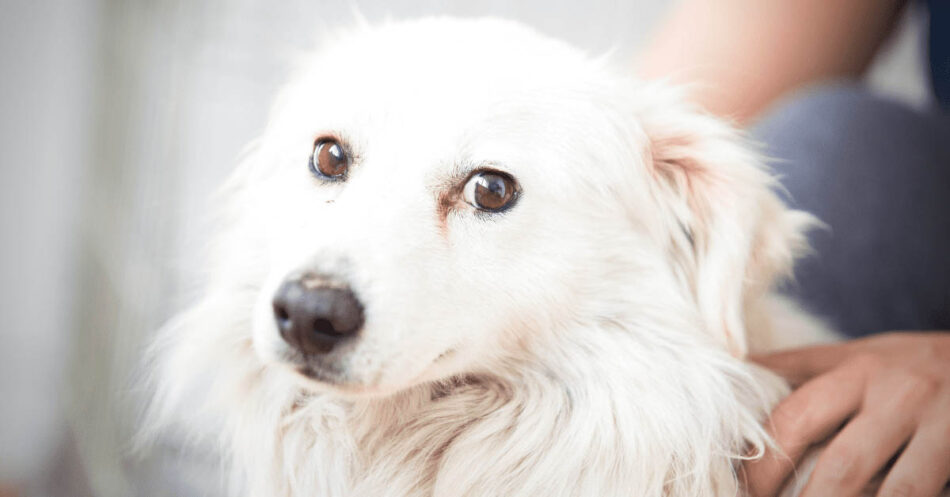
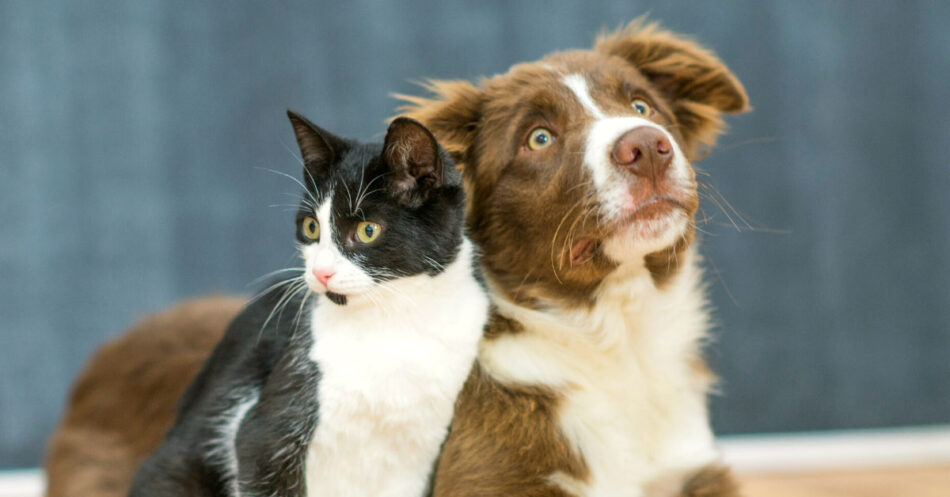
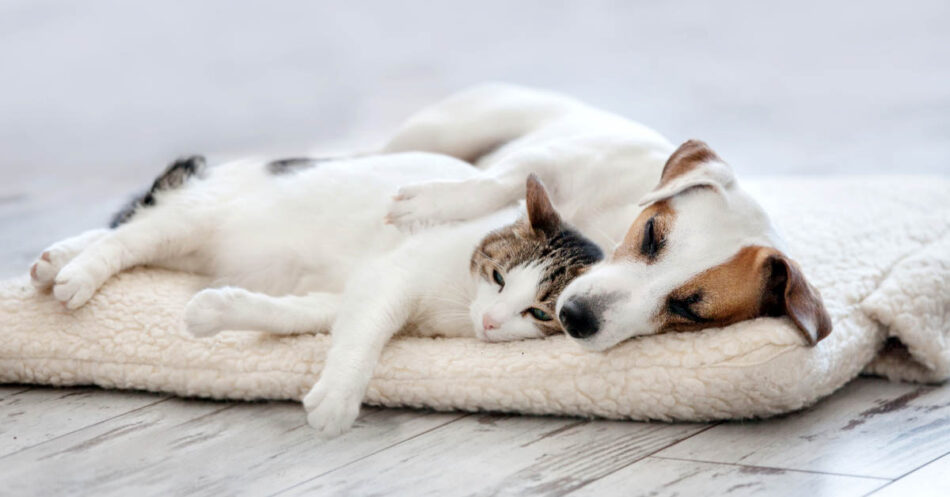
Great content! Keep up the good work!
I have two 9 mt old kittens. Brother/sister. Both have been fixed. The female started peeing right outside the litter box (have 2 I keep clean). Originally the vet said she had a urinary infection and treated it. She seemed fine, then started again. I took her back to the vet and he gave her another round of antibiotics. She has again started peeing outside her box. I had some laundry lying near one of the boxes and found her peeing on a article of clothing. The vet gave me pet Prozac but I haven’t used it yet. Suggestions? I hate to medicate her and she seems happy and loving. She eats well (Hills Urinary dry food). I’ve had cats before and she seems fine except for the peeing issue.
Dianne,
So sorry to hear your kitty’s having litter box issues – I understand how frustrating that can be! If your vet has signed off on your kitty’s urinary health, some other possible causes include:
1. Lingering smell. Even if our noses can’t smell it, pets can smell even the slightest hint of urine and return to the scene of the crime. A good enzyme-based cleaner can help.
2. Anxiety. If there have been any recent changes in your household, or if your kitty has been having conflicts with her sibling, that can lead to litter box issues.
3. The litter box is covered. Cats can be very particular, and some don’t like going to the bathroom in a covered litter box.
For more details, please visit my blog posts on cats not using the litter box, how to find the best enzyme cleaner for cat urine, and this one on litter box secrets to encourage your kitty to go where she’s supposed to.
Hope this helps!
Kristen